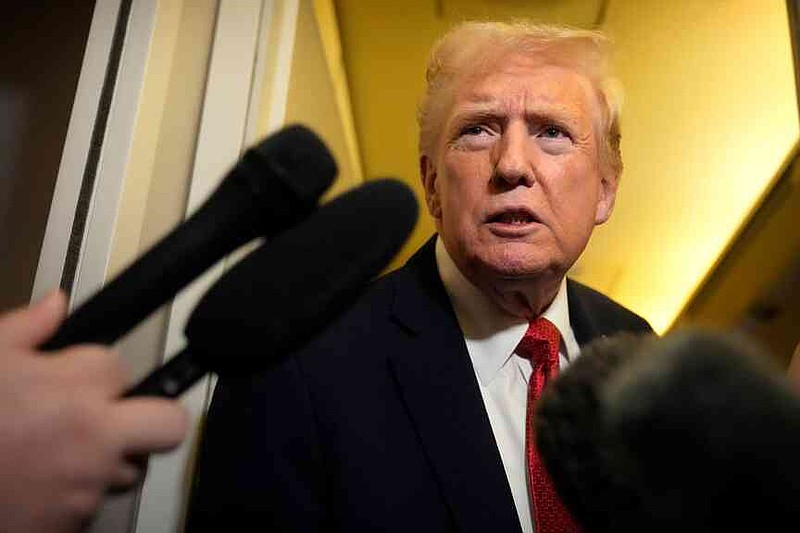Argentina’s central bank and the U.S. Treasury have signed a currency swap line for $20 billion, a key vote of confidence for President Javier Milei ahead of a crucial midterm election on Sunday.
The deal, announced by the Argentine monetary authority on Monday, is meant to preserve price stability and promote sustainable economic growth in the crisis-prone nation. The agreement establishes terms and conditions for the bilateral swap arrangement and will strengthen the liquidity of Argentina’s international reserves.
Argentina’s dollar bonds jumped after the statement was released, with notes maturing in 2035 reaching a high for the day to trade 0.6 cent higher, at around 56 cents on the dollar, according to indicative pricing data compiled by Bloomberg.
Last week, Milei met with President Donald Trump at the White House, and his economic team, led by Luis Caputo, stayed in Washington to meet with investors and the International Monetary Fund. During the meeting, Trump said aid to the South American nation was contingent on a good election result, worrying investors that the help may only come after the vote.
The agreement aims to bolster Argentina’s currency, which has continued to sell off despite Treasury Secretary Scott Bessent announcing the U.S. was buying pesos and repeatedly signaling for a month that an agreement is coming. Currency traders in Argentina estimated that the U.S. Treasury sold over $200 million on Friday, building on other interventions from previous days. The peso is down 5.7% so far in October and nearly 30% so far this year, the worst in emerging markets over both periods.
The deal came a day after Trump said the United States could buy Argentine beef in an attempt to bring down prices for American consumers.
“We would buy some beef from Argentina,” the Republican president told reporters aboard Air Force One during a flight from Florida to Washington on Sunday. “If we do that, that will bring our beef prices down.”
Trump promised days earlier to address the issue as part of his efforts to keep inflation in check.
U.S. beef prices have been stubbornly high for a variety of reasons, including drought and reduced imports from Mexico due to a flesh-eating pest in cattle herds there.
SOYBEAN TRADE
Trump also addressed China aboard the Sunday Air Force One flight, saying that he wanted China to return to its previous level of purchases and that he thought Beijing was ready to make a deal on soybeans.
On Monday, it was revealed that for the first time since November 2018, China imported no soybeans from the U.S. in September, data from China’s General Administration of Customs showed Monday. China accounted for half — or $12.6 billion — of U.S. soybean exports last year.
“We’re in uncharted territory in terms of a complete absence of Chinese buyers for the harvest that is currently coming in,” said Even Pay, director of agriculture research at Trivium China, a research firm based in Beijing.
For Beijing, halting U.S. soybean imports has been an easy and relatively cost-free way to pile pressure on Trump ahead of a planned meeting with Chinese leader Xi Jinping in South Korea later this month.
Yet while American farmers lobby Trump to get them back into China, there isn’t similar pressure within China for the government to allow purchases from U.S. suppliers. That “gives Beijing a great deal of negotiating leverage,” Pay said.
Chinese analysts are blunt about their country’s growing preference to buy from anywhere but the U.S.
“From China’s perspective, the U.S. is an unpredictable supplier,” said Niu Haibin, director of the Center for Latin America Studies at Shanghai Institutes for International Studies.
Tariffs mean U.S. soybeans no longer have a price advantage and China has already identified alternative suppliers to fill the gap. “The longer we rely on alternative sources, the dimmer the outlook for U.S. soybean exports to China becomes,” Niu said.
Those suppliers include Argentina, Uruguay and even Russia. But it is Brazil, the world’s largest soybean exporter, that has been the big winner from China’s U.S. embargo.
China would typically alternate between hemispheres, buying from Brazil during its March to June harvest season and then from the U.S. for the remainder of each year.
But this year, instead of switching to American farms, China kept placing orders from Brazil. It imported $4.7 billion in soybeans from the country in August and only $100 million worth from the U.S.
That continued in September, when China bought 7.2 million tons of soybeans from the South American country — 93% of its total exports, according to Anec, Brazil’s national association of grain exporters.
China’s effort to secure Brazilian soybeans goes far beyond merely placing big orders.
Chinese state-owned companies have taken stakes in the major Brazilian ports of Paranaguá, Açu and Santos. COFCO, China’s largest agricultural importer, has the exclusive rights to run a major new terminal at Santos that opened in March and will expand the port’s throughput by 15 million tons per year when it reaches full capacity in 2026.
And Beijing is still trying to lower barriers for Brazilian exporters to access its vast market. The two countries are working on plans to build a railway connecting Brazil to Peru’s Chancay port that could cut shipping times to Asia dramatically.
Information for this article was contributed by Christopher Megerian of The Associated Press, Manuela Tobias and Nicolle Yapur of Bloomberg (WPNS) and by Christian Shepherd and Lyric Li of The Washington Post.






